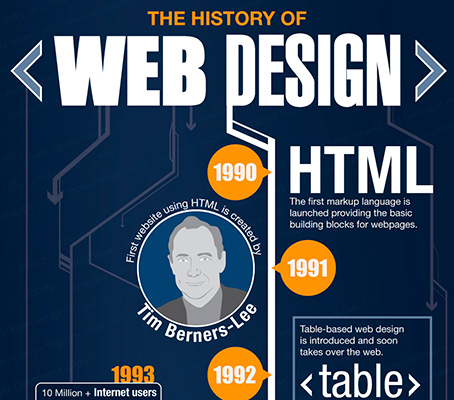Keen To Uncover How Website Style Has Changed In Time? Study The Advancement From Simplicity To User-Focused Experiences.
Keen To Uncover How Website Style Has Changed In Time? Study The Advancement From Simplicity To User-Focused Experiences.
Blog Article
Write-Up Author-Solis Vangsgaard
In the past, websites were straightforward and focused on details. Navigating was direct, and layout was for desktops. Currently, individual experience is essential. Information guides layouts for very easy navigation. Receptive designs suit different devices. Today, dark setting lowers stress, and minimalist menus improve navigation. Interactive features engage individuals, and strong visuals stand apart. AI assimilation improves involvement. See just how layout has developed to enhance your on the internet trip.
Early Days of Website Design
In the early days of website design, simplicity reigned supreme. Sites were basic, with limited shades, typefaces, and designs. The emphasis was on giving information instead of flashy visuals. Customers accessed the net via slow-moving dial-up links, so rate and functionality were crucial.
Navigation food selections were straightforward, commonly located on top or side of the web page. Internet sites were developed for home computer, as mobile browsing wasn't yet common. Web content was king, and designers focused on simple readability over complex layout elements.
HTML was the primary coding language used, and designers had to work within its restraints. Computer animations and interactive attributes were very little contrasted to today's requirements. https://judahkfytm.snack-blog.com/29816252/by-following-these-steps-you-ll-enhance-your-opportunities-of-finding-the-ideal-digital-advertising-business-to-aid-your-organization-be-successful-in-the-affordable-on-the-internet-landscape were fixed, with little dynamic web content or individualized individual experiences.
Rise of User-Focused Layout
With the advancement of site layout, a shift towards user-focused design principles has ended up being significantly prominent. Today, producing sites that focus on customer experience is essential for involving visitors and accomplishing organization objectives. User-focused design entails recognizing the needs, preferences, and behaviors of your target audience to customize the internet site's layout, material, and features accordingly.
Developers currently conduct comprehensive study, such as individual studies and usability screening, to collect insights and responses straight from individuals. This data-driven technique aids in creating user-friendly navigating, clear calls-to-action, and visually attractive user interfaces that resonate with site visitors. By placing the individual at the center of the design procedure, web sites can deliver a more individualized and delightful experience.
Responsive design has also become an essential element of user-focused style, making sure that sites are optimized for numerous gadgets and display sizes. This versatility boosts availability and usability, catering to the varied ways users connect with web sites today. In essence, the rise of user-focused style represents a shift towards creating electronic experiences that prioritize the needs and expectations of the end individual.
Modern Trends in Web Design
Discover the current trends shaping website design today. One prominent pattern is dark mode layout, providing a sleek and contemporary look while lowering eye stress in low-light settings. An additional key trend is minimalist navigation, simplifying menus and enhancing individual experience by concentrating on essential elements. Including micro-interactions, such as computer animated buttons or scrolling results, can create a more interesting and interactive web site. Receptive layout remains important, guaranteeing smooth user experiences across various tools. Furthermore, utilizing strong typography and asymmetrical layouts can include visual passion and accentuate certain content.
Incorporating AI modern technology, like chatbots for consumer support or personalized recommendations, improves user involvement and improves processes. Access has likewise end up being a considerable trend, with designers prioritizing inclusive design practices to deal with diverse user needs. Accepting sustainability by optimizing internet site efficiency for rate and effectiveness is one more arising trend in web design. Collaborating with customer responses and data analytics to repeat and boost layout continually is essential for remaining appropriate in the ever-evolving electronic landscape. By accepting go to this web-site , you can produce an aesthetically attractive, user-friendly internet site that reverberates with your audience.
Final thought
As you review the advancement of internet site style from the very early days to currently, you can see how user-focused design has ended up being the driving force behind modern fads.
Embrace the trip of modification and adjustment in web design, always maintaining the customer experience at the leading edge.
Remain current with the most recent fads and innovations, and never ever stop progressing your technique to create aesthetically magnificent and user-friendly sites.
Evolve, adapt, and develop - the future of website design remains in your hands.
